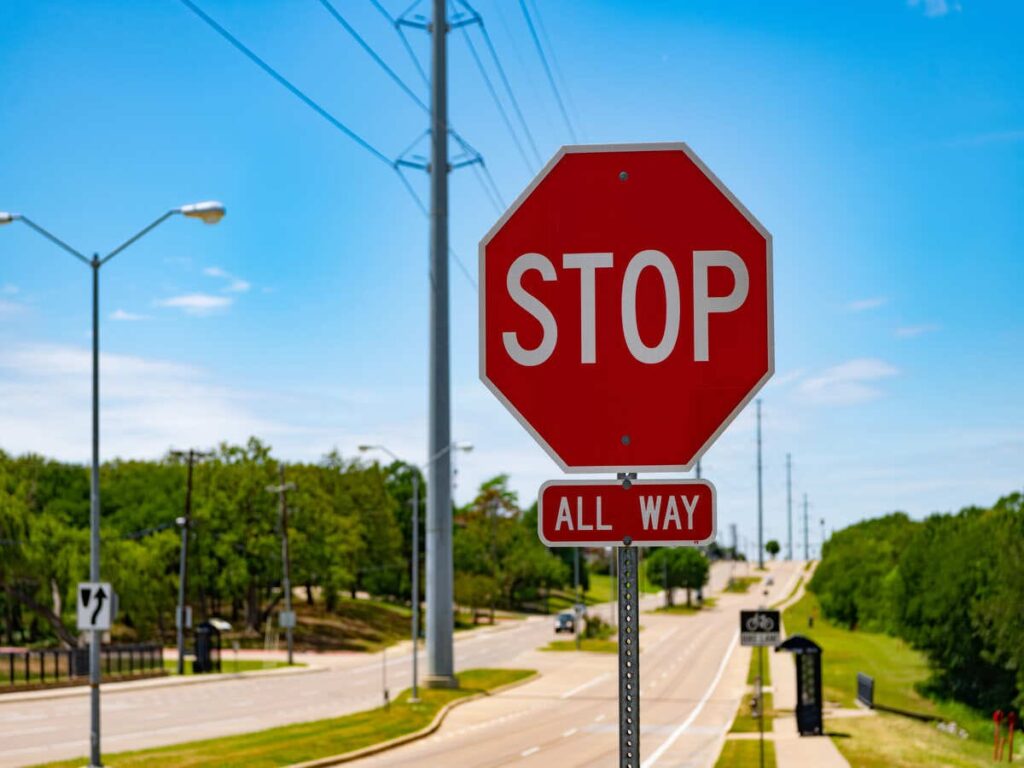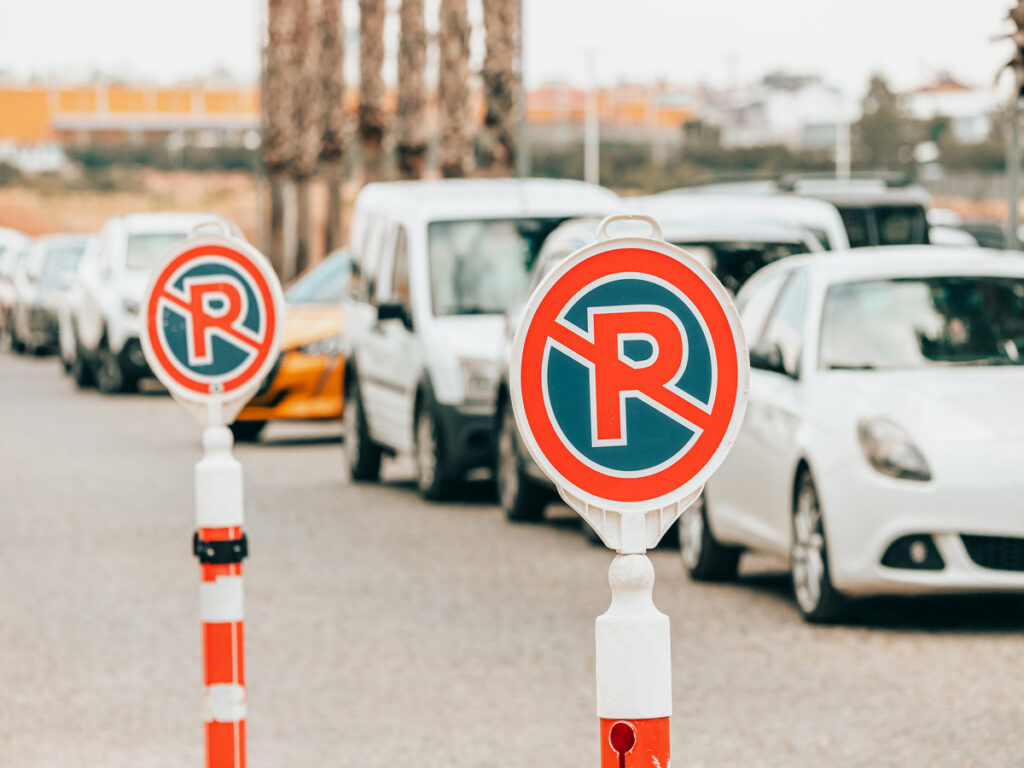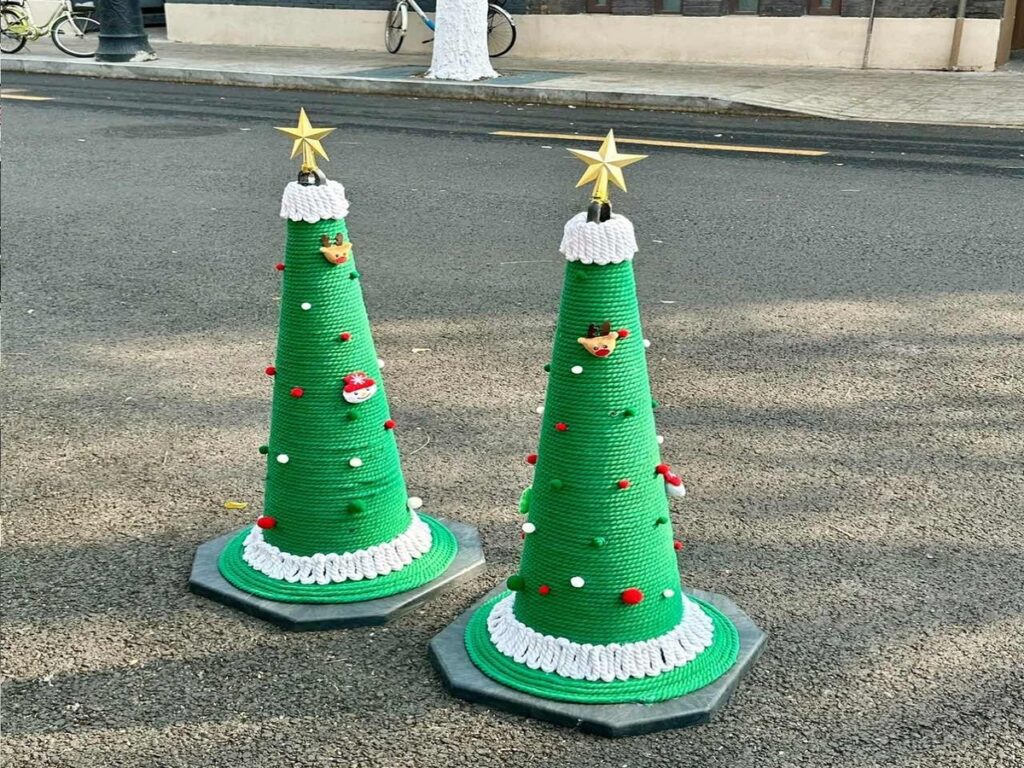
Traffic cone signs are useful for managing traffic temporarily. They are light and easy to move, making them great for short-term use in work zones or construction areas. But they don’t work well everywhere. Being easy to see is very important for road safety. Studies show that clear signs help drivers notice warnings sooner and avoid crashes. Stability also matters. If cones don’t have heavy bases, they can fall over and cause problems instead of helping. Rules are important too. Signs must follow MUTCD rules to keep workers safe and traffic organized. Knowing these things helps you make smart choices and stay safe.
OPTRAFFIC offers high-quality traffic signs and traffic sign frames that meet safety regulations and provide optimal stability, ensuring the safety of both workers and drivers. Trust OPTRAFFIC reliable products to keep your work zones organized and secure.
Key Takeaways
- Cone signs work well for short-term use in work zones. They are light and simple to set up fast.
- To make them easier to see, add reflective tape or lights. This is helpful at night or in dim areas.
- Always follow safety rules when using cone signs. Make sure they are tall enough and easy to see.
- Adding weights to the base keeps cone signs steady in wind. This stops them from tipping over and causing problems.
- Cone signs should not be used on fast roads or for long periods. Use regular road signs for these situations to stay safe.
When Traffic Cone Signs Work Well

Temporary Road Closures and Detours
Traffic cone signs are helpful for short-term road closures. They are light and easy to set up quickly. This makes them great for emergencies or quick repairs. Drivers can follow the orange traffic cones to safely avoid blocked areas. Placing them in the right spots keeps traffic moving and reduces confusion.
To make them more useful, use cones with reflective tape or lights. These features help drivers see them at night or in dim light. Weighted bases keep cones from falling over in strong winds. These small changes can make a big difference in keeping roads safe during temporary closures.
Keeping Construction Zones Safe
In construction areas, cone signs help protect workers and guide cars. Some cones have smart features like sensors to track traffic. These cones can also create safe walking paths for pedestrians. This keeps both workers and people nearby safe.
Adding reflective tape or LED lights makes cones easier to see. Sensors can warn about dangers and send alerts to traffic systems. Smart cones improve safety and help traffic move better in busy work zones.
Indoor or Covered Outdoor Use
Cone signs work well indoors or in covered outdoor spaces. Their small size makes them perfect for marking hazards like wet floors. You can also use them to guide people during events or inspections. This helps keep things organized and safe.
Since they’re not exposed to bad weather, stability isn’t a problem indoors. People can easily read the signs up close. You can even customize the signs for special uses, like directions or branding. This makes cone signs a flexible and affordable option for indoor needs.
Low-Traffic Private Areas and Parking Lots
Traffic cone signs are useful for low-traffic areas and parking lots. They are easy to move and set up quickly. Use them to mark hazards, guide cars, or show parking zones.
Why Cone Signs Work in Private Areas
- Close-Range Visibility: Drivers and walkers are closer to cones in these areas. This makes the signs easy to see and understand.
- Flexibility: You can move cone signs easily to fit changing needs. Use them to redirect traffic during events or repairs.
- Cost-Effective: In private lots, rules are less strict. Cone signs are a cheaper option than regular road sign frames.
Tip: Add reflective tape or LED lights to cones. These features help people see them better at night or in low light.
Limitations to Consider
Cone signs may not stay stable in strong winds. They also might not be tall enough to see from far away. Adding weighted bases can help, but for important signs like fire lanes, regular sign frames are better.
Real-Time Alerts and Traffic Management
Some cone signs have smart features like sensors or LED screens. These can give real-time warnings to drivers. They work with traffic systems to keep cars moving and prevent accidents. For example, smart cones can warn about hazards or show open parking spots.
Using these new tools can make private areas safer and more organized without needing permanent signs.
Limits of Traffic Cone Signs

Hard to See on Fast Roads
Cone signs are hard to notice on fast roads. Drivers need more time to see and react to signs. Because cones are short, they’re not visible from far away. This can confuse drivers and cause missed warnings or crashes. Regular road signs are taller and easier to see from a distance.
On highways, cone signs can be blocked by big vehicles. Trucks and buses make it harder to spot cones. This makes them unsafe for busy or fast-moving traffic. For these roads, taller signs are better for safety.
Problems in Bad Weather
Bad weather makes cone signs harder to see. Rain, fog, and snow reduce visibility for drivers. Research shows weather can make road signs less noticeable. Strong winds can also knock over cones without heavy bases. This creates risks for drivers and workers.
Smart cones with lights or sensors can help in bad weather. But they still need to stay stable to work well. Adding weights or using stronger signs is better during storms or harsh weather.
Not Good for Long-Term Use
Cone signs are best for short-term needs. They’re too small for detailed messages or maps. They can’t show big warnings or instructions in two languages. This makes them unfit for complex traffic setups like construction zones.
Over time, weather can damage cone signs and make them less useful. Permanent signs last longer and handle tough conditions better. For long-term projects, use strong, durable signs to keep roads safe and clear.
Regulatory Non-Compliance in Public Roadways
Using cone signs on public roads can cause big problems. While cones are easy to use for short-term setups, they often don’t meet the rules for public traffic safety. These rules, like those in the Manual on Uniform Traffic Control Devices (MUTCD), make sure signs are clear, steady, and safe.
Why Cone Signs Don’t Work Well on Public Roads
- Height and Visibility Requirements: Road signs must be tall enough for drivers to see far away. Cone signs are short and can be hidden by cars or objects. This makes it hard for drivers to notice them, which can lead to accidents.
- Reflectivity Standards: Road signs need reflective materials to be seen at night or in dim light. Most cone signs don’t have enough reflectivity, so they’re hard to see in the dark or bad weather.
- Durability and Stability: Road signs must handle tough weather and fast-moving traffic. Cone signs without heavy bases can fall over in strong winds. This can block traffic and create dangers for drivers and workers.
- Legal Compliance: Groups like MUTCD and OSHA have strict rules for road signs. These rules cover height, size, and how signs are mounted. Cone signs usually don’t meet these rules, making them unsafe and against regulations.
The Risks of Breaking the Rules
Not following safety rules can lead to serious problems. Bad signs can cause crashes, fines, and even lawsuits. For example, if a cone sign doesn’t warn drivers about a work zone, accidents could happen. This puts lives at risk, slows traffic, and costs money for repairs and legal fees.
Tip: Always check that your signs follow local and federal rules before using them on public roads. Spending money on proper road signs can prevent mistakes and keep everyone safe.
When Cone Signs Are a Better Choice
Cone signs work best in private areas, quiet zones, or indoor spaces. They’re good for short-term jobs like marking hazards or guiding cars in parking lots. But for public roads, use proper signs that meet all safety rules.
By knowing where cone signs work and following the law, you can make roads safer and avoid risks. Following the rules isn’t just about the law—it’s about keeping people safe and traffic running smoothly.
Key Things to Know About Using Traffic Cone Signs
How to Place Cones for Better Visibility
Placing cones correctly keeps roads safe and avoids accidents. Bright orange cones are easy to see and guide drivers well. To make them more visible, arrange cones in a slanted line. Start placing them 500 feet before the work zone and continue 100 feet past it. This smooth setup helps drivers adjust safely.
The space between cones is important too. In slow-speed areas, keep cones 10 feet apart. In fast-speed zones, space them 20 feet apart. Use cones with reflective tape for better visibility at night or in dim light. These features help cones work well in all conditions, reducing confusion and improving traffic flow.
Tip: Add reflective tape or LED lights to cones. This makes them easier to see at night or in bad weather.
Following Road Safety Rules
Following safety rules is key for managing traffic well. Cones need to meet height, reflectivity, and strength standards. In slow-speed zones, cones should be at least 18 inches tall. For fast-speed areas, use cones that are 28 inches or taller.
Rules like MUTCD and OSHA explain what cones should be made of and how they should perform. Reflective parts are required for cones used at night. Cones also need to handle tough weather like wind and rain. Sticking to these rules keeps workers and drivers safe and avoids breaking the law.
| Evidence Type | What It Means |
|---|---|
| Safety Standards | Cones must follow U.S. and Australian/New Zealand safety rules. |
| OSHA Regulations | Cones are important for workplace safety and must meet OSHA rules. |
| Environmental Standards | New rules require cones to meet both safety and environmental needs. |
Picking the Right Cone Height and Sign Size
Choosing the right cone height and sign size is very important. Taller cones are better for fast-speed areas, while shorter cones work in slow-speed or indoor spaces. Match cones with the right-sized signs to make messages clear.
For detailed messages, use bigger signs on taller cones. Smaller signs are good for quick warnings in construction zones or parking lots. Weighted bases stop cones from falling over in windy weather. Smart cones with sensors or LED screens can give real-time warnings, making roads safer and traffic smoother.
Callout: Always pick cone heights and sign sizes based on your specific needs. This helps ensure good visibility and follows safety rules.
Using Weighted Bases for Better Stability
Weighted bases help keep traffic cones steady in tough conditions. Without them, cones might fall over and cause confusion or accidents. Adding weights makes sure cones stay upright, even in strong winds or busy areas. This simple fix improves safety in work zones and traffic setups.
Using weighted bases stops cones from moving or tipping over. This is very important in construction zones where clear signs prevent accidents. Weighted bases also keep cones stable during bad weather like heavy rain or strong winds. This makes sure your traffic control stays effective no matter the weather.
Another benefit of weighted bases is supporting smart features. Some cones have LED lights or sensors for real-time alerts. These tools work best when cones don’t wobble. Weighted bases help these features work properly, giving drivers clear warnings and reducing accidents.
For long-term or risky projects, weighted bases are a smart buy. They make cones last longer, saving money on replacements. This improves safety and keeps things organized. Whether at a construction site or parking lot, weighted bases are a dependable way to maintain order.
Tip: Pick weighted bases that fit your cone size and type. This ensures they stay steady and work well in any situation.
Real-World Examples of Cone Sign Usage
Effective Use Cases for Traffic Cone Signs
Traffic cone signs work well for short-term and flexible needs. They are great for construction zones, parking lots, and indoor spaces. Their lightweight design makes them easy to move and set up.
For instance, autonomous vehicles (AVs) can detect and respond to cones. Companies like Waymo and GM Cruise use cones to guide AVs in construction zones. These cones help AVs change routes safely and manage traffic better. Research centers like the American Center for Mobility test AVs with cones in simulated setups. This shows cones help reduce accidents and improve safety in changing conditions.
| Source | What It Shows |
|---|---|
| Waymo and GM Cruise | AVs adjust routes using cones in construction zones. |
| Academic Research | Machine-learning systems recognize cones in real and test environments. |
| Research Centers | Simulations with cones test AV safety and obstacle avoidance. |
| Regulatory Bodies | NHTSA and Euro NCAP require AV safety in work zones with cones. |
Smart cones with sensors and LED screens make them even more useful. These traffic safety cones give real-time warnings to drivers about hazards. For example, valet services use branded cones to mark drop-off spots. This helps manage traffic clearly without needing permanent signs.
Scenarios Where Cone Signs Fall Short
Cone signs are not good for high-risk or long-term setups. Avoid using them on public roads where visibility is critical. They are too short and not reflective enough for fast-moving traffic. Drivers might miss warnings, causing confusion or accidents.
Bad weather also creates problems. Rain, fog, and wind can make traffic safety cones hard to see or knock them over. Without weighted bases, cones may fall and create dangers. On public roads, rules like MUTCD require signs to meet strict standards. Cone signs often fail to meet these rules, making them unsafe for regulated areas.
For example, cone signs don’t work well for marking fire lanes in parking lots. Their short height makes them hard to notice in busy areas. Using cones for lane closures on highways can also lead to accidents and legal issues. In these cases, regular road sign frames are safer and follow the rules.
Tip: Check the environment and laws before using cone signs. For important safety messages, choose strong and rule-compliant signs.
Traffic cone signs are useful for managing traffic for short times. They are light and easy to move, making them great for construction sites, private areas, or quick setups. But they can’t fully replace regular road signs in risky or rule-heavy places. Things like how visible, stable, and rule-following they are matter a lot.
Using smart cones with alerts and weighted bases can make work zones safer. These features help lower the chance of accidents. Always think about what you need and follow safety rules to manage traffic well. Picking the right tools keeps people safe and traffic moving smoothly.
To learn more about the differences between traffic cone signs and portable sign frames, check out our blog: Traffic Cone Signs vs. Portable Sign Frames.
FAQ
What are smart traffic cones, and how do they improve safety?
Smart cones have sensors or LED screens for real-time alerts. They warn drivers about dangers and guide cars safely. These cones help manage traffic better in work zones. They lower accident risks and keep traffic moving smoothly.
Can traffic cone signs replace traditional road signs in all situations?
No, cone signs are best for short-term or simple setups. They work well in parking lots, construction sites, or indoors. But they don’t meet rules for public roads or long-term use. They lack the height and strength needed for busy areas.
How can you make traffic cone signs more stable in windy conditions?
Weighted bases keep cones steady during strong winds or heavy traffic. They stop cones from falling over and causing confusion. Adding weights is important for outdoor safety, especially in work zones.
Are traffic cone signs effective for high-speed roads?
No, cone signs don’t work well on fast roads. They are too short and hard to see from far away. Taller signs that follow safety rules are better for highways. These prevent accidents and keep drivers safe.
What are the benefits of using traffic cone signs in private areas?
Cone signs are cheap and easy to set up in private spaces. They help guide cars and mark hazards clearly. You can customize them for events or special needs. Their flexibility makes them great for temporary use.



















